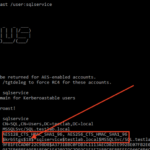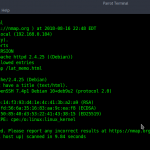Javascript Training Summary
JavaScript is an open source and the most popular client-side scripting language supported by all browsers. JavaScript is primarily used to enhance a user’s interaction with a webpage. This online guide is ready to make you a JavaScript supporter!
Javascript Fundamentals
| Tutorial | What is JavaScript? Complete Introduction with Hello World! Example |
| Tutorial | Javascript Variable: Declare, Assign a Value with Example |
| Tutorial | JavaScript Array Methods: Create with Example |
| Tutorial | For, While and Do While LOOP in JavaScript (with Example) |
| Tutorial | JavaScript Conditional Statements: IF, Else, Else IF (Example) |
Advanced Javascript
| Tutorial | Javascript Define & Call Functions with Example |
| Tutorial | Cookies in JavaScript: Set, Get & Delete Example |
| Tutorial | JavaScript DOM Tutorial with Example |
| Tutorial | Object Oriented JavaScript (OOJS) Tutorial with Example |
| Tutorial | Internal & External JavaScript: Learn with Example |
| Tutorial | Practical Code Examples using JavaScript |
| Tutorial | JavaScript Interview Questions & Answers |
| Tutorial | JavaScript Unit Testing Frameworks |
| Tutorial | TypeScript Tutorial: Types, Arrays, Enum, Classes, Interfaces |
| Tutorial | Typescript vs JavaScript: What’s the Difference? |
| Tutorial | Java vs JavaScript: Most Important Differences You Must Know |
| Tutorial | QuickSort Algorithm in JavaScript |
| Tutorial | Difference Between =, ==, and === in JavaScript [Examples] |
| Tutorial | 90 Best JavaScript Certification Courses |
| Tutorial | 14 Best JavaScript Books for Beginners and Experts |
| Tutorial | 19 BEST JavaScript IDE |
| Tutorial | JavaScript Tutorial for Beginners PDF |
How do JavaScript engines work?
JavaScript Engines are complicated. But it works on some simple basics:
- The engine reads (“parses:) the script.
- Then it converts or compiles the script to the machine language.
- After that machine code runs.
Here, the JavaScript engine implements optimization at each stage of the process. It reads a compiled script and analyzes the data passing into the JavaScript engine. After that, it applies optimization to machine code from that acquired knowledge. When this process is complete, the script runs much faster.
What can in-browser JavaScript do?
The functionality of JavaScript depends on the environment it is running. For example, Node.js supports functions that allow JavaScript to read and write arbitrary files, perform network requests, object-oriented, and so on. The development of JavaScript that plays client-side (front-end) and server-side (back-end) applications can vary wildly.
In-browser JavaScript also allows you to manipulate webpages, interact with the user and with the web server.
Javascript offer advantages like:
- Show dynamic content based on the user profile.
- React to user’s operations, like mouse clicks events, key presses or pointer movements.
- Support features like auto-validated form entries and interactive drop-down menus.
- Send requests to remote servers, Upload and download files.
- JavaScript code can also create movement and sound
- Ask questions to the users, Get and set cookies, show messages, switch browser tabs.
- Allows the data on to be stored in the local storage.
What can’t in-browser JavaScript do?
JavaScript’s capabilities in the browser are quite limited for the sake of the user’s safety. It helps to prevent any unauthorized webpage from accessing private information.
Examples of such limitations are:
- JavaScript on a webpage may not allow you to copy, execute or read/write arbitrary files on the hard disk. It doesn’t offer any access to Operating system functions.
- Many browsers allow it to work with files, but the access is very limited and only provided if the user is performing a specific action like, dropping a file into a browser window or selecting using <input> tag.
- JavaScript allows you to communicate over the net to the server where the current page came from. Although, it does not allow you to receive data from other sites/domains.
What makes JavaScript unique?
Here, are the three most important features which make JavaScript unique
- It offers full integration with HTML/CSS.
- Simple things are done quickly without any complication or following strict rules.
- Supported by all major browsers and JavaScript is enabled by default.
Alternatives to JavaScript
The syntax of JavaScript not suited for everyone as different project demands different features. However, some modern tool like a Coffee script, Typescript, and Dart allowing developers to code in another language and then auto-convert into the JavaScript code.
Where is JavaScript Today?
ECMAScript is a specification governed by ECMA international aimed at standardizing JavaScript. The latest version is ECMA9 also called JavaScript 9. It is supported by all major browsers like Chrome, Firefox, Internet Explorer, etc. Though each browser has an array of unique commands that are not part of the standards.







A weasel comes to say Happy New Year to the chickens.